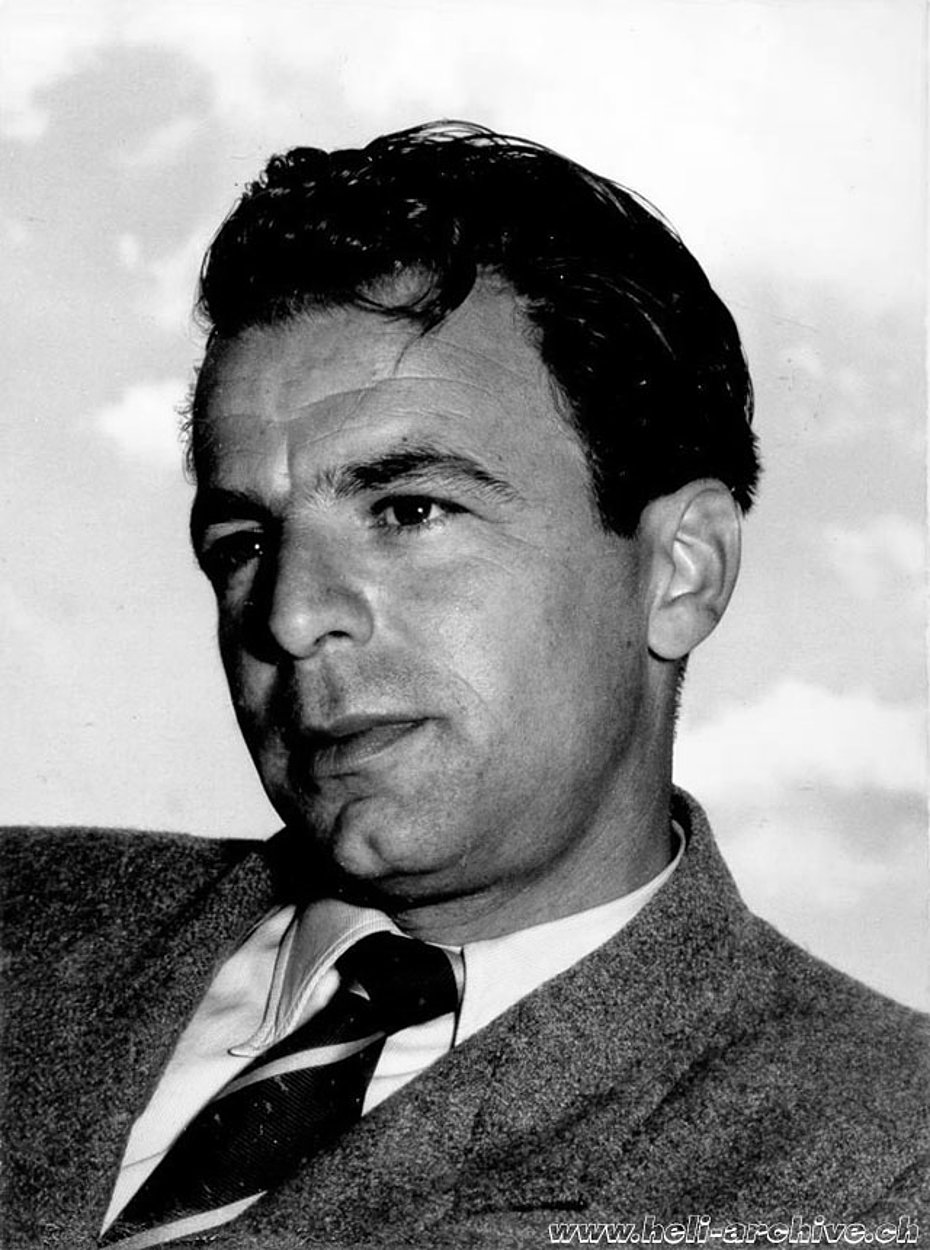
Gerber E. Raymond
Raymond Gerber was one of the first helicopter pilots in Switzerland. Unfortunately his career was abrutly interrupted on October 26, 1953 when the 35 year old pilot tragically died in a helicopter accident.
Raymond Eduard Gerber was born in Biel on July 2, 1918 but grew up in Fontainemelon, a hamlet of the Val-de-Ruz which is a district of the canton of Neuchâtel.
After completing his compulsory education, he obtained a high school diploma as a machinery technician at the Technikum (nowadays the University of Applied Sciences in Bern).
Fascinated by aviation since his childhood, in 1943 he obtained the glider pilot license. Much later he obtained the aeroplane private pilot license followed by the commercial pilot license. In the course of the years he also obtained the following license extensions: glider tow, aerobatic and night flights.
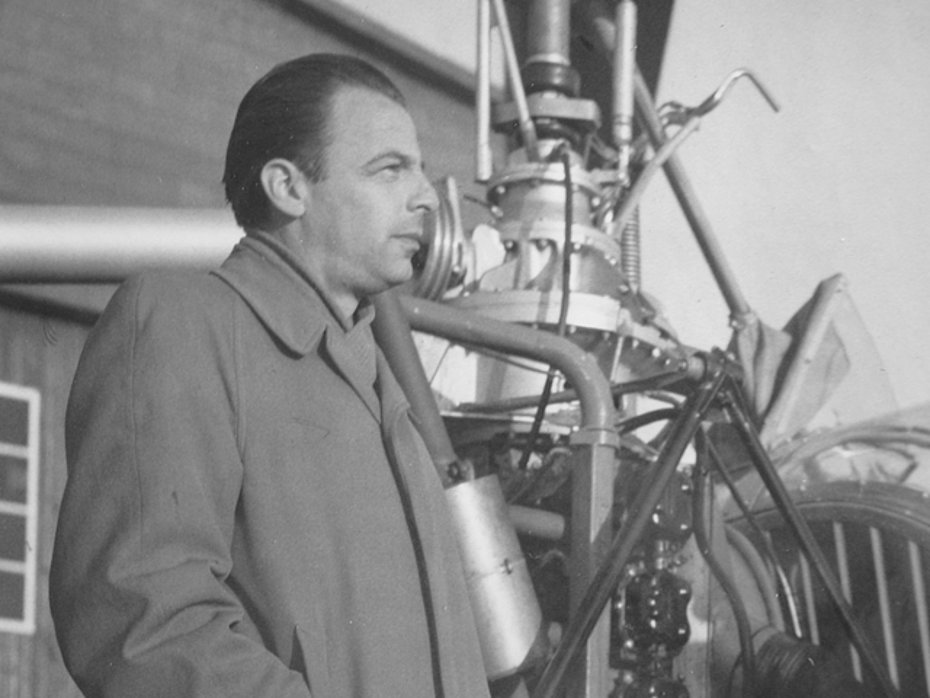
Gerber was employed by Alpar, a transport and services aircraft company based at the airport of Belp, as chief engineer, commercial pilot and private pilot instructor.
As a sport pilot Gerber took part in the aviation meeting winning the first “Circuito aereo delle Isole”, and air race organized at the airport of Ascona in September 1949.
Helicopter pilot
In the early 1950s the helicopter made its appearance in Switzerland and Alpar followed with close interest its progress. The future of the rotary-wing seemed to be bright and promising, although not free of risks and uncertainty.
Between February 16 and March 6, 1952 Air Import organized at the airport of Belp the second course for helicopter pilots. Gerber along with Albert Müller, a flight inspector employed by the Federal Office for Civil Aviation (FOCA) partecipated in the course. Both were trained by Sepp Bauer and learned to fly on the Hiller 360.
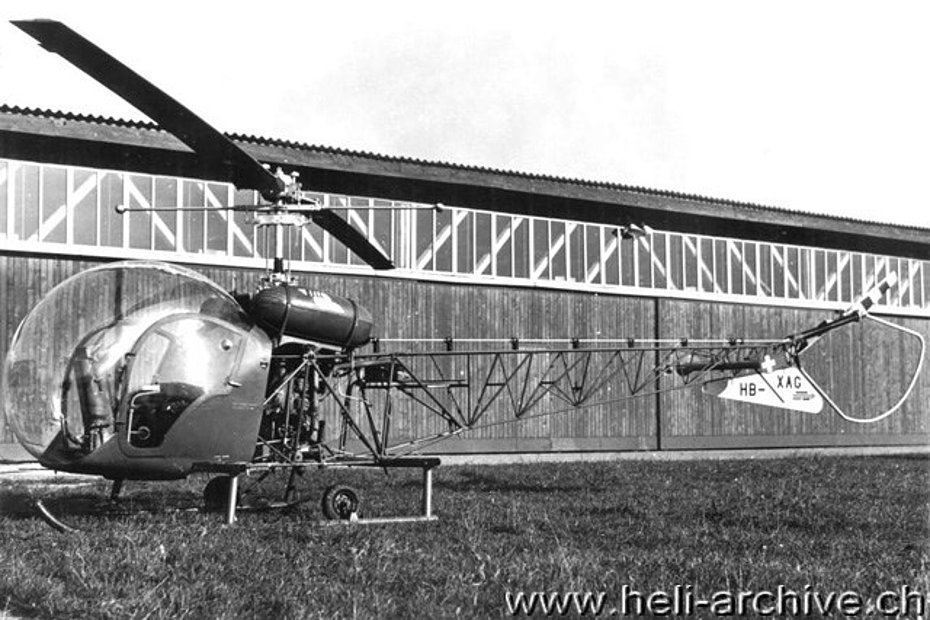
On March 6, 1952, both candidates successfully completed the course. FOCA granted Raymond Gerber the helicopter private pilot license nr. 4.
It's interesting to note that the high cost of his training as a helicopter pilot (about Sfr. 16,000) were financed by a foundation created to promote the development of civil aviation in Switzerland named “Stiftung zur Förderung des schweizerische Luftverkehrs”.
Throughout 1952, there were no major events, while the following year from 25 January to 1 February 1953 Gerber along with Walo Hörning and Hermann Aeschbacher (Chairman of the Board and Alpar’s director respectively) went to England to acquire first-hand information on helicopters produced by the British.
On January 26, the three visited the Westland Aircraft Ltd factory in Yeovil. On January 28 there was a visit to the British European Airways Helicopter Unit (BEA), and finally on January 29, there was a tour visit at the Bristol Aeroplane factory in Filton.
Thanks to an agreement with Westland Aircraft Ltd Gerber, in order to obtain a helicopter commercial license, completed his training there. At that time a minimum flight experience of 50 hours was required by FOCA. Gerber was trained by Westland’s chief-pilot John Fay and made several flights logging altogether 10h30’ on the S-51.
On February 6, at the end of the intensive training course, he passed the practical examination supervised by Fay.
During his stay in England the Swiss pilot also had the opportunity to fly with the Bristol 171 Sycamore along with Captain Jock Cameron, head of the Experimental Helicopter Unit of BEA.
On April 7, 1953 FOCA granted Raymond Gerber the commercial helicopter pilot helicopter nr. 4.
Pilot of the Schweizerische Helikopter AG (Heliswiss)
Schweizerische Helikopter AG (SHAG) was officially formed in Bern on April 17, 1953 with an initial share capital of Sfr. 350,000. Among the major shareholders there was the aforementioned Alpar AG. Given his experience in the aviation field Raymond Gerber was selected as pilot. The latter during the summer contributed to the organization of the first flight demonstrations organized by SHAG who wanted to test the performance of various helicopters.
In June the Sikorsky S-55 F-BGOY was tested, while in September trials were made with the Bristol 171 Sycamore G-AMWI.
On September 3, 1953, the board of directors of the newly-founded Schweizerische Helikopter AG, decided to buy a second-hand Bell 47G. Raymond Gerber went to France at the company Fenwick along with the Alpar’s chief-mechanic Jean Seydoux.
That is where Gerber was trained to fly the Bell 47D1 and G models, while Seydoux followed a specific course for mechanics. At the end of the training course, during which the Swiss pilot logged altogether 6h 30’ of flight, Fenwick’s chief-pilot Jean-Moine granted him a certificate that enabled him to fly the aforementioned models.
On October 3, 1953 Gerber returned to Switzerland piloting the Bell 47G that the newly founded Schweizerische Helikopter AG had purchased for Sfr. 180,000. After its arrival in Switzerland the helicopter was registered as HB-XAG.
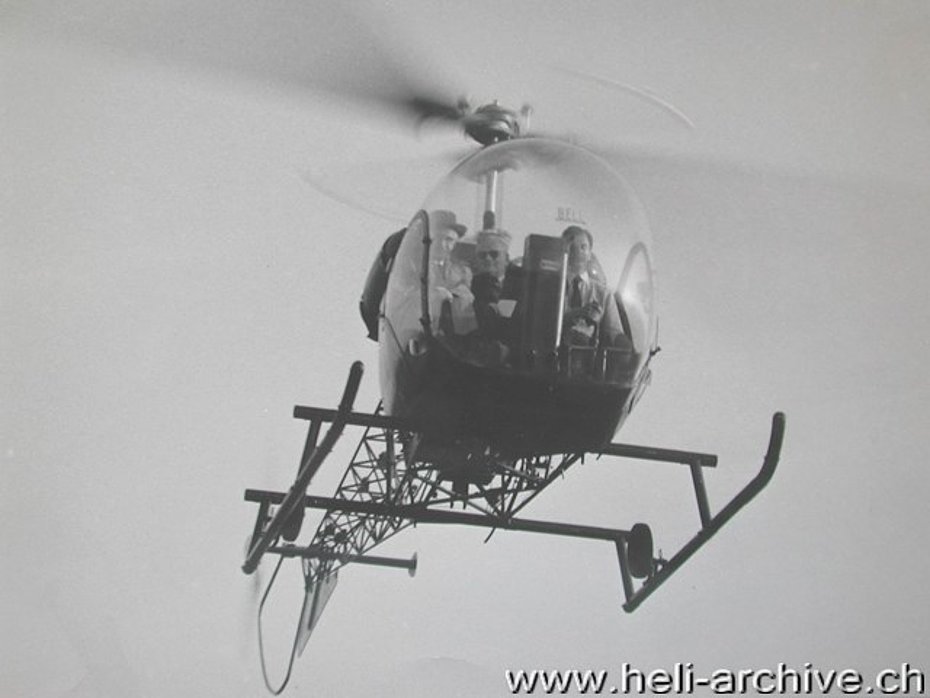
A fatal imprudence
In the days following the arrival of the helicopter in Belp-Belpmoos, Gerber made several demonstration and passenger flights.
On October 17-18 the Bell 47G was officially presented to the public, and on October 24 it was presented to the head of the FOCA.
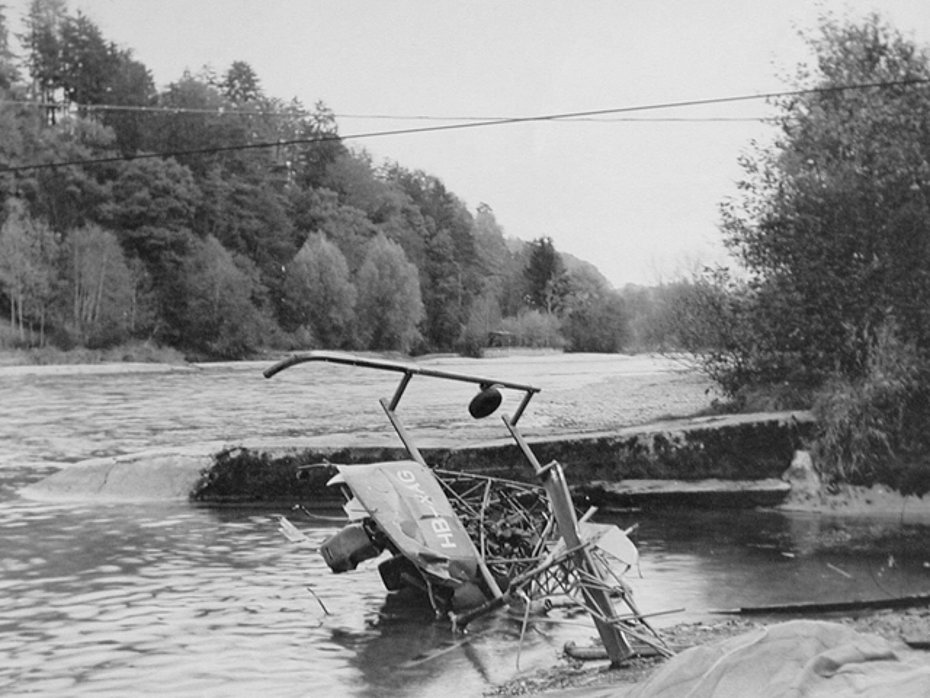
Only a few weeks later, on Monday afternoon of October 26, Raymond Gerber accompanied by two passengers took off from Belp-Belpmoos directed to Gurten for a short scenic flight.
A few minutes later he returned to the departure point, but instead of landing, he passed at low altitude over the ground and made a right turn in the direction of the Aare river. After having flown above the top of the trees the helicopter disappeared. Witnesses observed the helicopter flying at very low altitude over the river. Shortly after the HB-XAG hit two 5mm cables of a 16,000 volt power line that crossed the Aar at an height of about 10 meters above the ground. At the same time, witnesses observed a series of flashes.
The three occupants were struck by lightening and the helicopter which was out of control, crashed into the bed of the river, not far from the collision point. Gerber and his two passengers died in the accident.
The investigators of the Swiss Accident Investigation Board were never able to determine why Gerber took the decision to fly over the river at such low altitude.
He was most likely to have wanted to show the great versatility and manoeuvrability of the helicopter.
Gerber had been working at the airport for about ten years, and knew the surrounding area. Perhaps he may have forgotten temporarily the presence of this power line.
During the investigation it was established that only a few days earlier during another scenic flight he had already committed another imprudence flying at low altitude over the Aar river passing under the "Halenbrücke" bridge.
On 14 May 1957, the Swiss Accident Investigation Board released the official accident report.
At the time of the tragic accident Raymond Gerber was qualified to fly with the Hiller 360, Sikorsky S-51, Bell 47D1 and 47G and had a flight experience under his belt of 930 hours on airplanes and 70 hours on helicopters, of which 18h30min on a Bell 47D1/G.
The incident had a personal and financial impact on the newly-founded Schweizerische Helikopter AG.
No beginning could be worse than the one deserved to the young company which later became the most important helicopter operator in Switzerland.
Flight activity began again in the following Spring with a new pilot (Leo Kunz) and a new helicopter (Bell 47G HB-XAE).
HAB 08/2014

